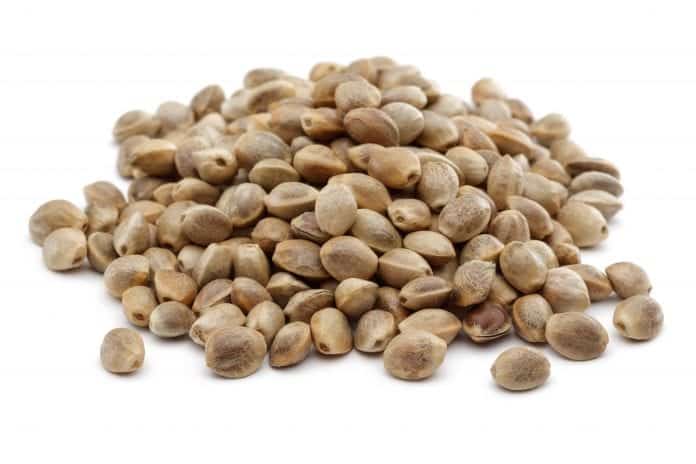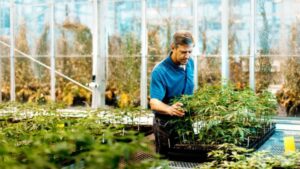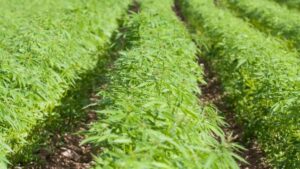Feminized hemp seed is a growing buzzword, but does it merit use or will it just make your hemp go hot?
The hemp industry has been growing steadily since 2018. By 2026, the U.S. hemp industry will reach $36 billion, and will grow at an annual rate of 34% from 2019 to 2026, according to a recently released Facts & Factors study.
Growers and seed companies alike have been looking for the next big genetics to make farmers’ ROI really boom. With that search, the perhaps new-to-you term feminized hemp seed, has arose.
But what exactly is feminized hemp seed, and does that term even make sense for the industry?
Creating a Female Population
In essence, feminized hemp seed produces only female plants. Mike Scheffel, managing director of policy and standards with the Canadian Seed Growers’ Association (CSGA) says to understand how that can happen, it’s important to take a step back.
“Hemp is naturally a dioecious plant, meaning it has separate male and female plants,” he says. “A normal cannabis variety or hemp variety will produce approximately 50% female plants and 50% male plants.”
Of course, that means the female plants will have female flowers, and the pollen from the male plants will fertilize the female flowers to produce seed for the next generation. However, to produce a female-only plant, you have to produce a masculinized female plant.

“At a certain stage of development, you want to get the female plant to produce male flowers and produce pollen,” Scheffel says. “But, this is still a female plant, and all the pollen it produces will only have XX chromosomes.”
When you fertilize a female plant with that female pollen, the seed only produces female plants. However, depending on the genetics and environmental conditions, some of these plants may present as monoecious, that is have both male and female flowers on the same plant.
While this is the goal of feminized hemp seed, says John McKay, chief scientific officer of New West Genetics and professor of plant evolutionary genomics at Colorado State University, he hasn’t seen other companies selling seed that produces 100% female populations.
“We don’t use the term feminized seed, because scientifically, it doesn’t make any sense,” McKay says. “We use the terms monoecious — females that express pollen and male flowers, or gender skew — deviation from a 50:50 ratio of males to females.”
Since not every variety makes 100% feminized hemp seed, McKay says the terms “monoecious” or “female gender skewed” make more sense, though “feminized” is the buzzword that’s taken hold.
Problems with All Female Plants
When creating an all-female population, there are a few issues that can arise.
For example, one of the main purposes for creating an all-female population of hemp is to increase CBD within the plant (or other cannabinoids). Unfortunately, as the CBD level rises, so can the THC level.
In the 2018 Farm Bill, one of the regulations outlined for hemp producers was hemp has to be below the 0.3% THC level. Any hemp tested and found to be above that 0.3% THC level is considered to be “hot,” or over the legal limit of THC.
“Depending on the genetics, there’s a strict correlation between THC and CBD,” says Scheffel. “To still get a high level of CBD, but also keep the THC below the 0.3% level, you really can’t take these hemp plants past somewhere between 6-8% CBD. The higher it goes with CBD, the more it tends to drag up the THC level, which causes the plants to get hot.”
One important study to note, McKay says, is by Larry Smart at Cornell University. The study worked to compare and see if there were any environmental stressors that could affect the THC level of hemp.
“The study found that you didn’t see an effect of the environment on the THC,” McKay says. “It’s not too surprising — it’s highly genetically controlled. In the U.S., THC content of many crops has been highly varied because many people selling seed didn’t bother getting rid of the genes that make THC.”
Another problem popping up in the U.S., McKay notes, is that some “feminized” seeds aren’t compliant with the U.S. THC regulations.
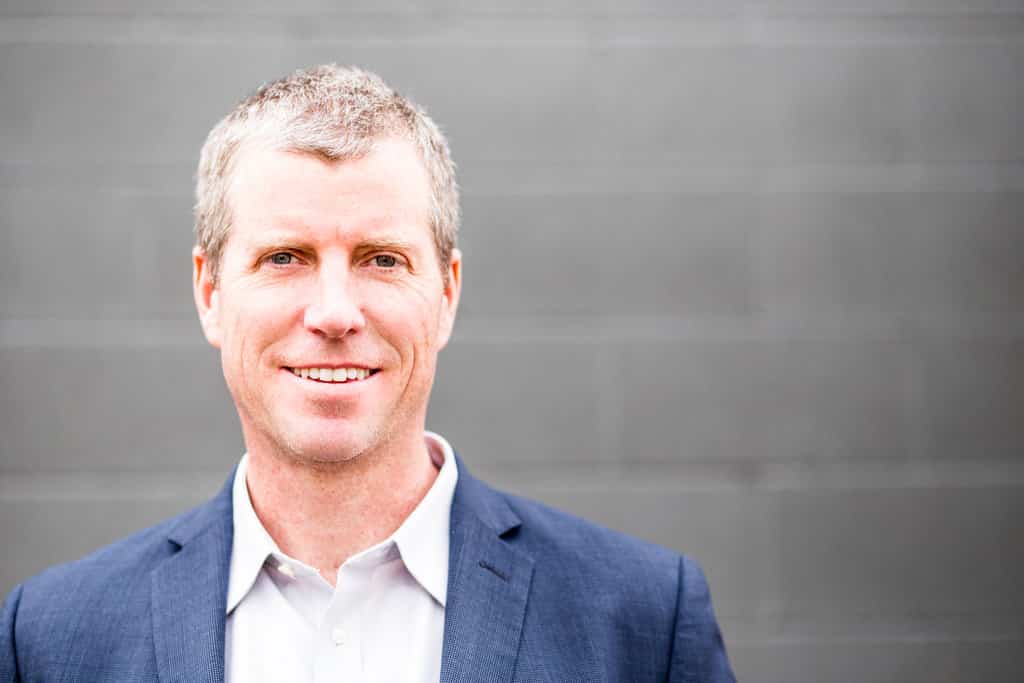
“We’ve purchased various feminized seed in Colorado, because everyone and their brother was selling hemp seed at one point,” McKay says. “I would say a lot of it is not actually feminized, and a lot of it isn’t actually hemp. I’d definitely recommend not getting those.”
Another difficulty McKay mentions is the price per pound of feminized hemp seed. When buying feminized hemp seed, it can get relatively pricey.
“There’s usually an extremely high price for what people are calling feminized hemp seed in comparison to any other crop seed,” McKay says. “People were selling it for tens of thousands of dollars per pound, especially during the CBD Gold Rush era.”
McKay says most of these populations are grown horticultural style.
“Feminized seed induction requires quite a bit more labor,” McKay says. “Therefore, the seed costs are higher than other ways of making seed. For large scale production and a stable supply chain, such seed costs are not economically viable. If you are producing a hemp crop for fiber, you would need to be paying dollars a pound for seed, not tens of thousands of dollars per pound.”
Varieties to Match the Standard
While problems with feminized hemp seed production are just emerging in the U.S., Canada has been working on strict regulations to maintain a proper hemp production of CBD.
CSGA, in particular, created a new standard for feminized hemp seed certification.
“We looked at the landscape of demand, and while the traditional hemp varieties in Canada had some level of CBD in them, they had not been bred by plant breeders for CBD,” Scheffel says. “This rapidly growing interest in CBD seem to be a potential opportunity for segments of the hemp sector to produce the specialized hemp varieties.”
CSGA recognized that the preferred mechanism for creating hemp focused on CBD production is through feminized hemp seed.
“CSGA is mandated by the federal government by legislation and regulations as the seed crop certification body for Canada, so the standards that CSGA establishes are used for the certification of seed crops,” he says. “Since hemp was legalized in Canada in 1998, we’ve had hemp seed production procedures in place, but we recognized a need to develop specific procedures for feminized hemp seed production.”
CSGA went through many versions of a guideline document with the help of an ad hoc working group made up of several plant breeders. The finalized guideline document was used to create the standards and requirements to ensure companies could produce seed that was true-to-variety and didn’t grow into “hot” crops.
“Part of the reason we developed these standards was so that Canadian plant breeders and seed growers would have the opportunity to develop these new varieties and grow them in Canada,” Scheffel says. “If we hadn’t developed the standards here in Canada, there was the possibility that they would go ahead and develop them in the U.S., and therefore, U.S. seed would be imported into Canada.”
One such variety of hemp that was certified using these standards is a variety from Cannabis Orchards.
Cannabis Orchards‘ novel variety of feminized hemp seed has a higher level of cannabigerol (CBG). But what makes it novel? The THC is undetectable.
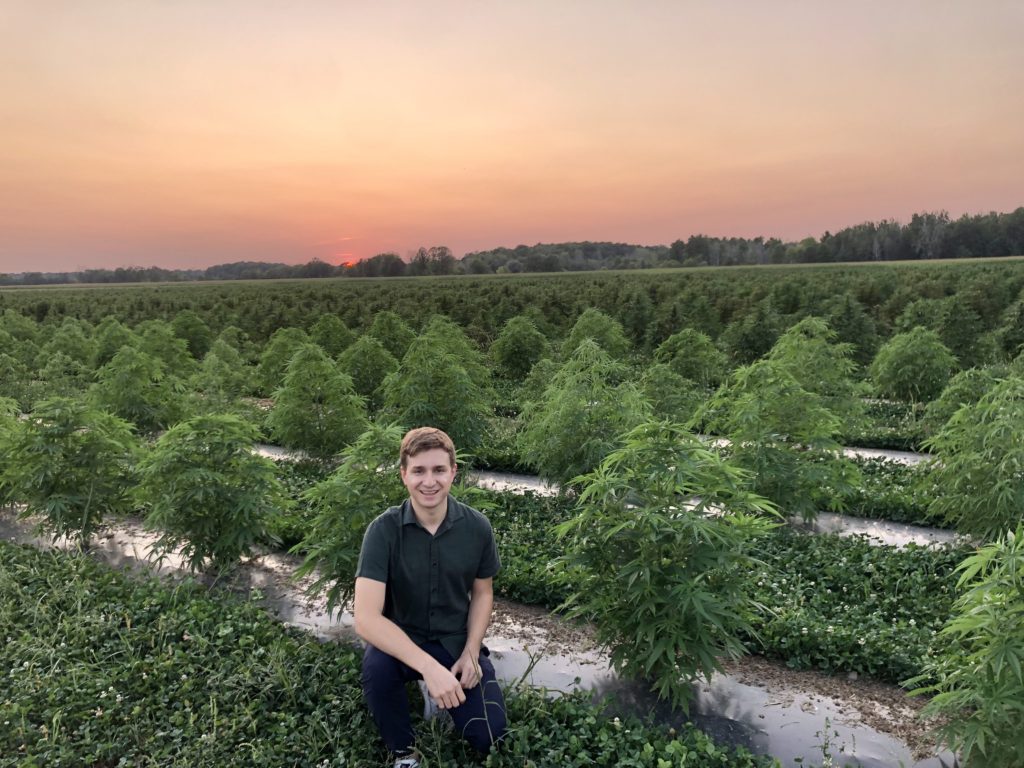
“HURV19PAN lacks functional enzymes for THC and CBD production,” says Jamie Ghossein, CEO of Cannabis Orchards. “That was done through careful cross and selective breeding with a partner in Spain, called Hemp Trading, and from the University of Valencia.”
The breeding project was a several year endeavor that stumbled upon a strain of hemp that lacks genes useful for THC and CBD synthesis, which is how the THC becomes undetectable.
“While we don’t know much in terms of the medical benefit of CBG, there’s a lot of anecdotal evidence for it, and we’re looking to offer this for clinical trials to Canadians seeking another cannabinoid with its own medical properties,” says Ghossein.
By feminizing this product, Ghossein says they can maximize the flowers’ yield, which is beneficial because the CBG is produced in trichromes found in in the flower of the plant and to a lesser extent, the leaves of the plant.
“To maximize flower yield for farmers, feminizing seed ensures that 100% of plants have flower from which cannabinoids can be extracted,” he says. “The fact that it’s non psychoactive by having flowers that don’t have any THC means that you don’t have those side effects. You can truly focus more on the health and medical side.”
In comparison, in the U.S., McKay says New West Genetics currently has a U.S. patent pending on hemp varieties that produce greater than 50% of female plants. The patent was submitted on May 20, 2021, and while not considered “feminized” seed, it is gender skewed.
When it comes to this “hot or not” trend of feminized hemp seed, ensuring your seed is certified and tested is imperative to maximize customer success and ROI.
For more stories, please go to our CANNABIS CHRONICLES section of the Germination website. 


